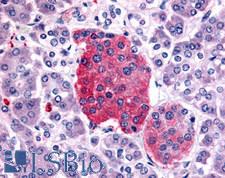Login
Registration enables users to use special features of this website, such as past
order histories, retained contact details for faster checkout, review submissions, and special promotions.
order histories, retained contact details for faster checkout, review submissions, and special promotions.
Forgot password?
Registration enables users to use special features of this website, such as past
order histories, retained contact details for faster checkout, review submissions, and special promotions.
order histories, retained contact details for faster checkout, review submissions, and special promotions.
Quick Order
Products
Antibodies
ELISA and Assay Kits
Research Areas
Infectious Disease
Resources
Purchasing
Reference Material
Contact Us
Location
Corporate Headquarters
Vector Laboratories, Inc.
6737 Mowry Ave
Newark, CA 94560
United States
Telephone Numbers
Customer Service: (800) 227-6666 / (650) 697-3600
Contact Us
Additional Contact Details
Login
Registration enables users to use special features of this website, such as past
order histories, retained contact details for faster checkout, review submissions, and special promotions.
order histories, retained contact details for faster checkout, review submissions, and special promotions.
Forgot password?
Registration enables users to use special features of this website, such as past
order histories, retained contact details for faster checkout, review submissions, and special promotions.
order histories, retained contact details for faster checkout, review submissions, and special promotions.
Quick Order
PathPlusTM SSTR2 Antibodies
SSTR2A (somatostatin receptor 2A) is one of the two isoforms of the somatostatin receptor 2, a G-protein coupled receptor for somatostatin-14 and somatostatin-28. Binding to the receptor inhibits adenylyl cyclase and calcium channels, resulting in several organ-specific functions, including inhibition of secretion of glucagon and insulin in the pancreas, inhibiting secretion of gastric acid, pepsin, and bile in the GI tract, and inhibiting secretion of neurotransmitters in the brain. The receptor thereby affects the body’s locomotor, sensory, autonomic and cognitive functions. Also, somatostatin can cause cell cycle arrest, as well as induce agonist-dependent endocytosis. The receptor also binds synthetic somatostatin (octreotide), which can be used to image or target somatostatin-secreting neuroendocrine tumors. It is mostly expressed in the cell membrane of pancreatic alpha and beta cells, various regions of the brain, the adrenal medulla and neuroendocrine cells.
References: Oncol Lett 2017 13(3):1165; Cell Phys Biochem 2002 12(1):31; Am J Phys Endoc Metab 2012 303(9):E1107; Bioch Biphys Acta 2001 1616(1):1
1 PathPlusTM Antibody

☰ Filters
Products
Antibodies
(1)
Type
Primary
(1)
Target
SSTR2
(1)
Reactivity
Human
(1)
Mouse
(1)
Rat
(1)
Bat
(1)
Bovine
(1)
Chicken
(1)
Dog
(1)
Hamster
(1)
Horse
(1)
Monkey
(1)
Pig
(1)
Xenopus
(1)
Application
IHC
(1)
IHC-P
(1)
Host
rabbit
(1)
Product Group
GPCR Database Antibodies
(1)
PathPlus Cancer Pathology
(1)
PathPlus Neuro
(1)
Clonality
polyclonal pc
(1)
Format
Unconjugated
(1)
Epitope
C-Terminus
(1)
Publications
No
(1)

Neuroscience
Cancer Pathology
Fast Shipping
SSTR2 Rabbit anti-Human Polyclonal (C-Terminus) Antibody
Xenopus, Chicken, Bovine, Rat, Hamster, Pig, Horse, Bat, Mouse, Dog, Human, Monkey
IHC, IHC-P
Unconjugated
50 µg/$395
Viewing 1-1
of 1
product results











